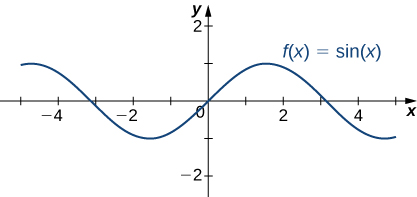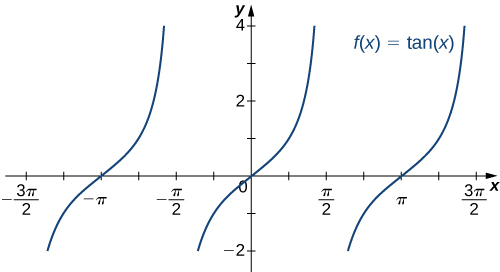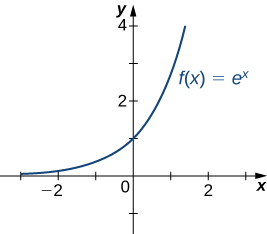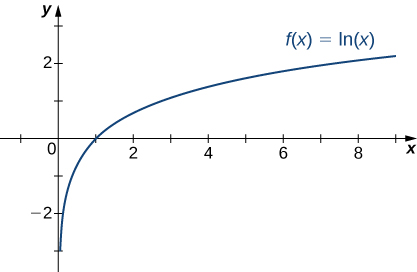End Behavior Cont.
Determining End Behavior for Transcendental Functions
Trigonometric functions
The six basic trigonometric functions are periodic and do not approach a finite limit as [latex]x\to \pm \infty[/latex].
For example, [latex]\sin x[/latex] oscillates between 1 and -1 (Figure 19). The tangent function [latex]x[/latex] has an infinite number of vertical asymptotes as [latex]x\to \pm \infty[/latex]; therefore, it does not approach a finite limit nor does it approach [latex]\pm \infty[/latex] as [latex]x\to \pm \infty[/latex] as shown in (Figure 20).


Exponential functions
Recall that for any base [latex]b>0, \, b\ne 1[/latex], the function [latex]y=b^x[/latex] is an exponential function with domain [latex](−\infty ,\infty )[/latex] and range [latex](0,\infty )[/latex]. If [latex]b>1, \, y=b^x[/latex] is increasing over [latex](−\infty ,\infty )[/latex].If [latex]0 For the natural exponential function [latex]f(x)=e^x[/latex], [latex]e\approx 2.718>1[/latex]. Therefore, [latex]f(x)=e^x[/latex] is increasing on [latex](−\infty ,\infty )[/latex] and the range is [latex](0,\infty)[/latex]. The exponential function [latex]f(x)=e^x[/latex] approaches [latex]\infty[/latex] as [latex]x\to \infty[/latex] and approaches 0 as [latex]x\to −\infty[/latex]. Recall that the natural logarithm function [latex]f(x)=\ln (x)[/latex] is the inverse of the natural exponential function [latex]y=e^x[/latex]. Therefore, the domain of [latex]f(x)=\ln (x)[/latex] is [latex](0,\infty )[/latex] and the range is [latex](−\infty ,\infty )[/latex]. The graph of [latex]f(x)=\ln (x)[/latex] is the reflection of the graph of [latex]y=e^x[/latex] about the line [latex]y=x[/latex]. Therefore, [latex]\ln (x)\to −\infty[/latex] as [latex]x\to 0^+[/latex] and [latex]\ln (x)\to \infty[/latex] as [latex]x\to \infty[/latex]. Find the limits as [latex]x\to \infty[/latex] and [latex]x\to −\infty[/latex] for [latex]f(x)=\frac{(2+3e^x)}{(7-5e^x)}[/latex] and describe the end behavior of [latex]f[/latex].
[latex]x[/latex]
[latex]-5[/latex]
[latex]-2[/latex]
[latex]0[/latex]
[latex]2[/latex]
[latex]5[/latex]
[latex]e^x[/latex]
[latex]0.00674[/latex]
[latex]0.135[/latex]
[latex]1[/latex]
[latex]7.389[/latex]
[latex]148.413[/latex]

[latex]x[/latex]
[latex]0.01[/latex]
[latex]0.1[/latex]
[latex]1[/latex]
[latex]10[/latex]
[latex]100[/latex]
[latex]\ln (x)[/latex]
[latex]-4.605[/latex]
[latex]-2.303[/latex]
[latex]0[/latex]
[latex]2.303[/latex]
[latex]4.605[/latex]
